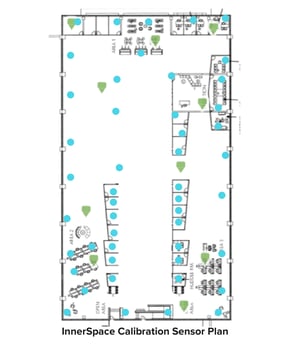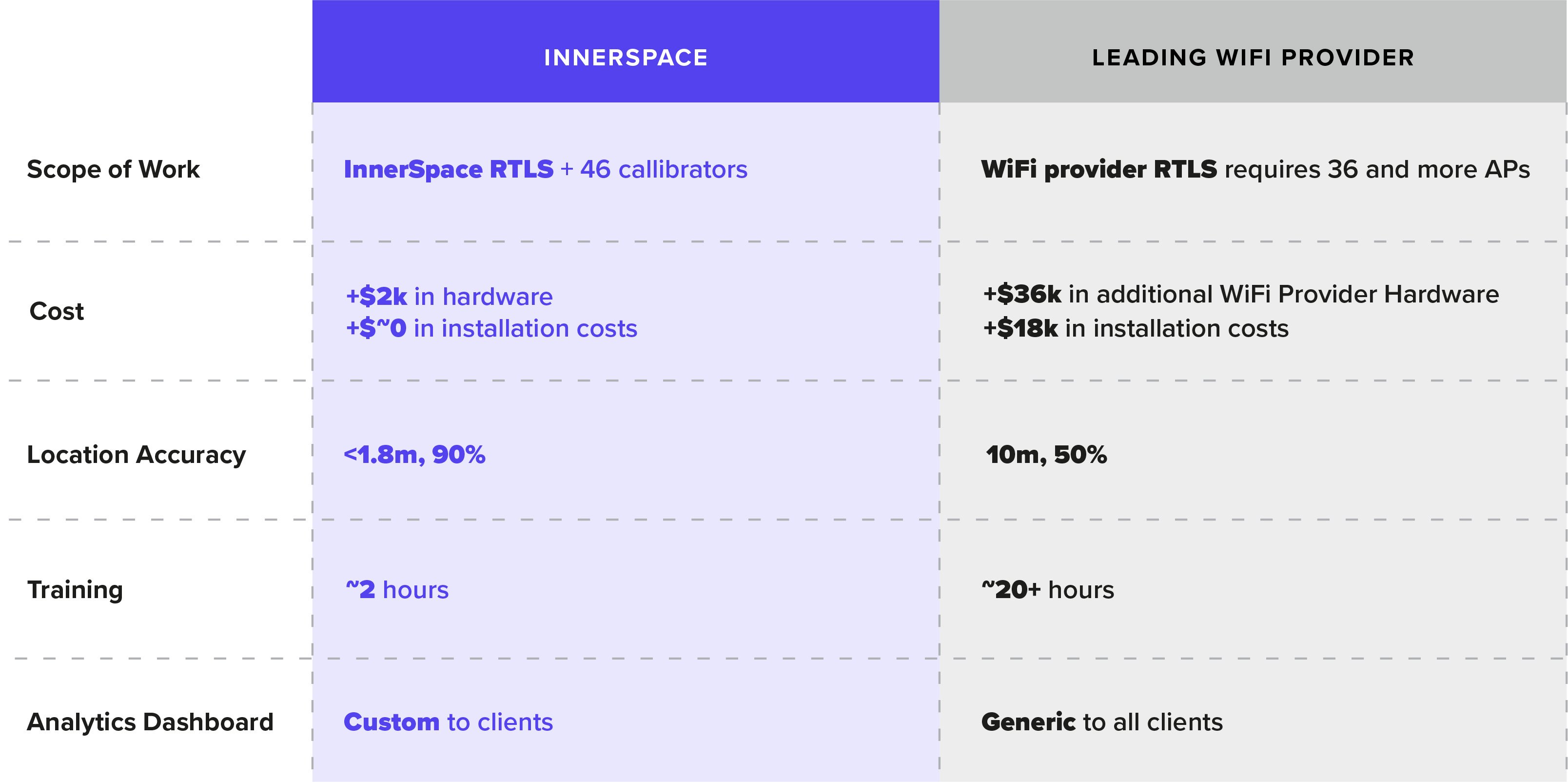Outdoors, when walking, driving or cycling, apps have replaced paper maps when it comes to figuring out where we are in relation to where we are going. GPS technology is omnipresent – except when it comes to the indoors. In offices, malls, museums and airports, it doesn’t work.
In the past 10 years, indoor location technologies have emerged to tackle this problem. There are companies tapping cell towers, using Bluetooth and beacons, and analyzing Wi-Fi signals all trying to generate data accurate enough to be useful indoors.
Whereas Google Maps and Waze are similar in turns of GPS accuracy, indoor location technology varies widely. Usually the choice is a tradeoff: some technologies can scale quickly but deliver largely inaccurate information; others depend on a dense blanket of sensors to deliver better accuracy but incur massive implementation and management costs.
At InnerSpace, we deliver on the best of both worlds.
The InnerSpace Approach
Over the last five years, our team patented our unique approach to calculating locations using Wi-Fi signals. In the early days we used our own location sensors to understand the movement of people inside a building. And in our approach we were able to achieve accurate locations consistently at sub-2m, 90 percent of the time.
More recently, we’ve formed partnerships with Wi-Fi providers including Arista and Juniper Mist so that we can use the existing Wi-Fi infrastructure our clients have already deployed in their office. This enables us to deliver accurate data, virtually eliminate infrastructure costs, and be highly scalable.
Using Wi-Fi access points in itself isn’t novel. Many providers offer location service add-ons to their network fees. But in order for this approach to work, a few things need to be considered. A reliable Wi-Fi network generally requires at least one access point to be within reach of all devices that want to connect to it. As a result, access points tend to be deployed centrally down the middle of an office. Enabling location services on this configuration yields very poor accuracy – typically in the neighborhood of 25-30 metres.
That variance clearly provides no value at all. To address this, the incumbents often suggest a client dramatically increase the number of access points, installing additional and often expensive hardware along the perimeter of the office. This approach can get accuracy down to the 7-10 metre range. Still not great.
InnerSpace takes a different approach. We have proven with our clients that we can sidestep the need for more access points by intelligently analyzing other sources of Wi-Fi signals in the space. By doing so, we actively calibrate our platform and effectively emulate a much larger Wi-Fi network than is actually present. Even if the network Wi-Fi access points run solely down the middle of an office, our platform can deliver indoor location accuracy to within two metres – at a fraction of the cost.
Proven accuracy



In the image above, our client has 16 Wi-Fi access points. To obtain indoor location services, the incumbent Wi-Fi provider would recommend an additional 36 access points (approx. $1,000 each) to achieve an accuracy of 10 metres. The cost, with installation, can approach $55,000 USD.
Instead, our client invested $2,000 in off-the-shelf Wi-Fi calibration devices to ensure they had appropriate and sufficient sources of calibration signals. These kinds of plug-and-play devices have an added benefit that anyone can set these up inside of an hour with zero installation costs.
When we compared the accuracy of our approach to the location results of the existing Wi-Fi provider, the InnerSpace platform achieved substantially better accuracy and consistency of calculated locations.

While no system can claim to be perfectly precise every single time, our data is not only highly predictable and consistent, our platform is easy to implement, scalable, and provides unparalleled value for the investment.
Accurate space utilization data through Wi-Fi?
We'll prove it to you.
See why industry leaders leverage InnerSpace to generate valuable insights that go beyond occupancy.

